A double amputee, named Nick Garwood, has learned to walk again after a ground-breaking, first-of-its-kind surgery was successfully completed.
An Oregon surgeon has completed the first osseointegration, a surgery that involves inserting a titanium implant into a patient’s bone. This allows direct fixation of a prosthesis.
Doctors say the method has a number of advantages over conventional socket-mounted prostheses for arms and legs.
Patients who undergo this surgery will have less pain, more independence, and regain the ability to feel the ground beneath them, known as “osseoperception.”
This “game-changing” surgery, as Dr. Steve Wallace, the surgeon leading osseointegration procedures, said, “is giving people their lives back.”

Nick Garwood became an amputee after a rare bacterial infection caused a septic infection.


“I could be stronger, faster and overall more capable,” Garwood said of his life-changing surgery.


‘I discovered almost immediately that the socket prosthetics, the first legs I had, were not going to work due to the skin breaking down. There was just no way we were going to make that work,” Garwood (pictured) said.
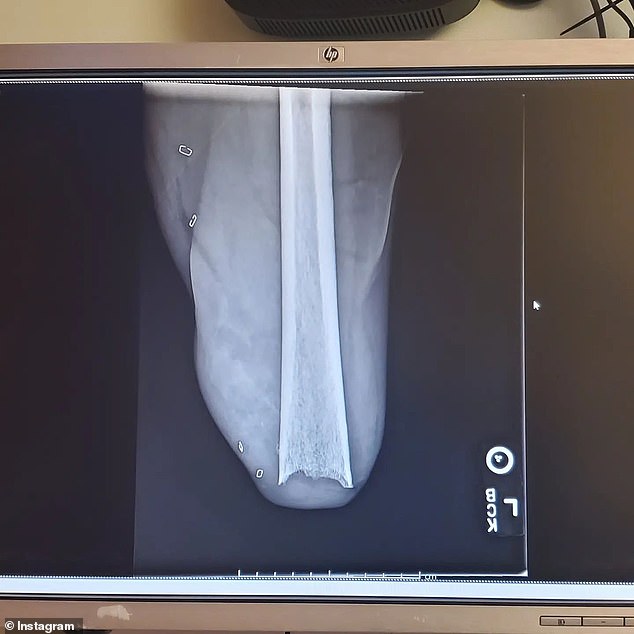

Garwood said he had been studying osseointegration as a last resort when Wallace moved to Portland.
Wallace breaks down the details of this new procedure with the local NBC affiliate KGW and why it hasn’t hit the market sooner.
“It is a device that is inserted into the bone, goes through the skin and allows direct fixation of the prosthesis,” Wallace said.
‘These implants were basically an extension of a dental implant many years ago. They’ve been in the US for probably about 10 years, but they’re becoming more and more popular and they’re not fully FDA approved yet, but we got them on a provisional basis.
After completing the first osseointegration surgery, two more patients had the opportunity to undergo the procedure with Wallace.
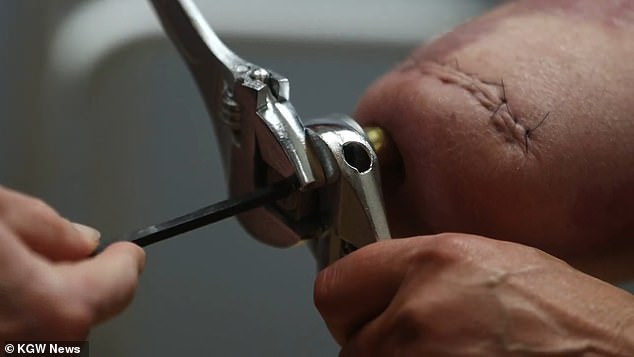

After his surgery, health professionals helped Garwood find the prosthesis that would best fit his limbs.
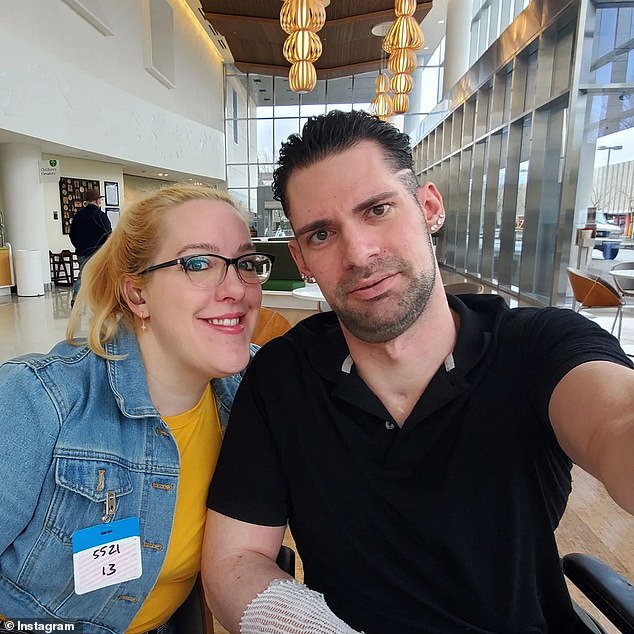

Pictured: Garwood’s wife Abigail and Nick posing for a photo together.
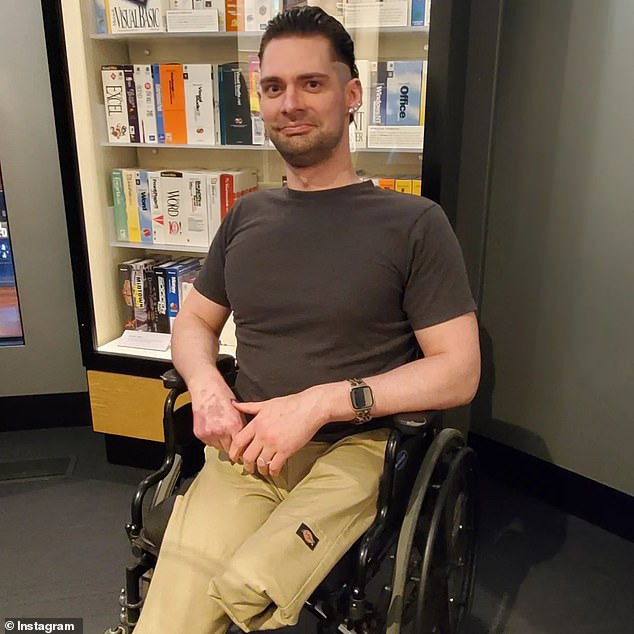

Garwood admits that the new prosthesis “makes walking much easier”


Pictured: Garwood’s selfie with his wife, Abigail.
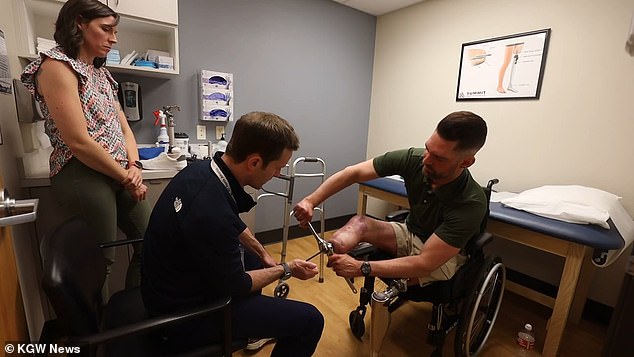

Garwood was able to try out the prosthetics before performing a test.
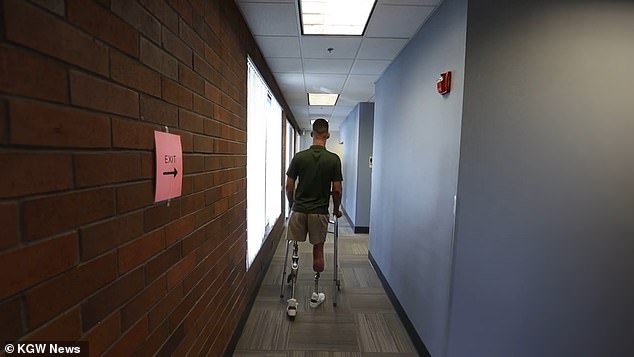

‘It felt incredible. It really felt amazing,” Garwood said of being able to stand up for the first time in years.
Nick Garwood became an amputee after a rare bacterial infection caused a septic infection. Doctors saved his life, but at the cost of both legs.
‘I discovered almost immediately that the socket prosthetics, the first legs I had, were not going to work due to the skin breaking down. There was just no way we were going to make that work,” Garwood told KGW.
Garwood said he had been studying osseointegration as a last resort when Wallace moved to Portland.
“It could be stronger, faster and overall more capable,” he said. “It was so amazing that Dr. Wallace was here and able to do it locally.”
After his surgery, health professionals helped Garwood find the prosthesis that would best fit his limbs. She tried them on and stood up for the first time in two hours.
‘It felt incredible. It really felt incredible,” Garwood said. ‘I could feel the ground beneath me, through my bones.
‘That makes it much easier to walk. I know where my foot is in space, in the same intuitive way I knew where my foot was when I had my real natural limbs.
‘It feels like I’m stepping on the ground. I can feel the same feedback.’
